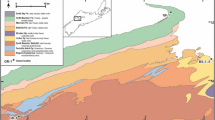Abstract
Cumulative emission or gaseous concentrations of ammonia (NH3) are commonly measured by trapping gaseous NH3 in an acidic solution that is later analyzed for total ammonia content. This traditional acid trap method is inexpensive, reliable, and accurate, but it is labor-intensive and inconvenient for high-frequency sampling. This paper describes a new acid trap method in which total ammonia concentration in a citric acid solution is calculated from measured pH by applying a speciation model. With this new method, the quantity of captured ammonia in a single acid trap can be determined repeatedly over time. Testing through titrations, laboratory emission measurements, and field measurement of gaseous NH3 showed that the method is accurate and reasonably precise. For the most sensitive case standard deviation was 8 μmol kg−1 in titration results, and 10−20 μmol kg−1 in the field trials. The lower quantitation limits from emission measurements and field trials were around 100 and 300 μmol kg−1, respectively. Speciation modeling was used to assess the importance of interferences. Results showed that error due to minor contamination of chemicals and evaporation of water can be kept at low levels. Acidic gases may be a significant interference, but their presence is easy to recognize, and significant error can be avoided by selecting an appropriate acid concentration.






Similar content being viewed by others
References
Clegg S, Brimblecombe P (1989) Solubility of ammonia in pure aqueous and multicomponent solutions. J Phys Chem 93(20):7237–7248
Clegg SL, Whitfield M (1995) A chemical-model of seawater including dissolved ammonia and the stoichiometric dissociation-constant of ammonia in estuarine water and seawater from −2°C to 40°C. Geochim Cosmochim Acta 59(12):2403–2421
Crea F, De Stefano C, Millero F, Crea F (2004) Dissociation constants for citric acid in NaCl and KCl solutions and their mixtures at 25°C. J Solution Chem 33(11):1349–1366. doi:10.1007/s10953-004-1046-z
Emerson MT, Grunwald E, Kromhout RA (1960) Proton-transfer studies by nuclear magnetic resonance. i. diffusion control in the reaction of ammonium ion in aqueous acid. J Chem Phys 33(2):547. doi:10.1063/1.1731182
Hafner SD, Bisogni JJ (2009) Modeling of ammonia speciation in anaerobic digesters. Water Res 43(17):4105–4114. doi:10.1016/j.watres.2009.05.044
Huang G, Hou J, Zhou X (2009) A measurement method for atmospheric ammonia and primary amines based on aqueous sampling, OPA derivatization and HPLC analysis. Environ Sci Technol 43(15):5851–5856. doi:10.1021/es900988q
Kielland J (1937) Individual activity coefficients of ions in aqueous solutions. J Am Chem Soc 59:1675–1678
Lawrence J, Koutrakis P (1994) Measurement of atmospheric formic and acetic-acids—methods evaluation and results from field studies. Environ Sci Technol 28(5):957–964
Martell A, Smith R, Motekaitis R (2004) Database 46: NIST critically selected stability constants of metal complexes. URL http://www.nist.gov/srd/nist46.cfm
Martensson L, Magnusson M, Shen Y, Jnsson J (1999) Air concentrations of volatile organic acids in confined animal buildings-determination with ion chromatography. Agric Ecosyst Environ 75(1–2):101–108. doi:10.1016/S0167-8809(99)00072-9
National Research Council: (1979) Ammonia. Medical and biological effects of environmental pollutants. University Park Press, Baltimore
Ni J, Hendriks J, Vinckier C, Coenegrachts J (2000) A new concept of carbon dioxide accelerated ammonia release from liquid manure in pig house. Environ Int 26(1–2):97–104
Ni JQ, Heber AJ (2001) Sampling and measurement of ammonia concentration at animal facilities: a review. Adv Agronom 98:201–269
Parkhurst D (2010) PHREEQC: a computer program for speciation, batch-reaction, one-dimensional transport, and inverse geochemical calculations. URL http://wwwbrr.cr.usgs.gov/projects/GWC_coupled/phreeqc/
Phillips V, Lee D, Scholtens R, Garland J, Sneath R (2001) A review of methods for measuring emission rates of ammonia from livestock buildings and slurry or manure stores, part 2: monitoring flux rates, concentrations and airflow rates. J Agric Eng Res 78(1):1–14
Plummer L, Busenberg E (1982) The solubilities of calcite, aragonite and vaterite in CO2–H2O solutions between 0°C and 90°C, and an evaluation of the aqueous model for the system CaCO3–CO2–H2O. Geochim Cosmochim Acta 46(6):1011–1040
R Development Core Team (2010) R: a language and environment for statistical computing. URL http://www.R-project.org
Rappert S, Muller R (2005) Odor compounds in waste gas emissions from agricultural operations and food industries. Waste Manag 25(9):887–907. doi:10.1016/j.wasman.2005.07.008
Rasmussen RA, Lewis CW, Stevens RK, Ellenson WD, Dattner SL (1996) Removing CO2 from atmospheric samples for radiocarbon measurements of volatile organic compounds. Environ Sci Technol 30(4):1092–1097. doi:10.1021/es9501979
Sander R (2011) Henry’s law constants. In: Linstrom P, Mallard W (eds) NIST Chemistry WebBook, NIST Standard Reference Database Number 69, National Institute of Standards and Technology, Gaithersburg. URL http://webbook.nist.gov
Schade G, Curtzen P (1995) Emission of aliphatic-amines from animal husbandry and their reactions—potential source of N2O and HCN. J Atmos Chem 22(3):319–346
Shah S, Westerman P, Arogo J (2006) Measuring ammonia concentrations and emissions from agricultural land and liquid surfaces: a review. J Air Waste Manag Assoc 56(7):945–960
Sommer SG, Husted S (1995) The chemical buffer system in raw and digested animal slurry. J Agric Sci 124(01):45–53. doi:10.1017/S0021859600071239
Thompson R, Meisinger J (2004) Gaseous nitrogen losses and ammonia volatilization measurement following land application of cattle slurry in the mid-Atlantic region of the USA. Plant Soil 266(1–2):231–246
Zemaitis JF (1986) Handbook of aqueous electrolyte thermodynamics: theory and application. Design Institute for Physical Property Data sponsored by the American Institute of Chemical Engineers, New York
Zhao L, Brugger M, Manuzon R, Arnold G, Imerman E (2007) Variations in air quality of new ohio dairy facilities with natural ventilation systems. Appl Eng Agric 23(3):339–346
Acknowledgments
We appreciate the help of Carrie Greene, Cathleen Hapeman, Laura McConnell, and Anh Nguyen (all at USDA-ARS), who provided access to laboratory facilities and equipment. We thank Rishi Banerjee (USDA-ARS) for his assistance with the field trials. We also thank Felipe Montes, Al Rotz (USDA-ARS), and two anonymous reviewers for helpful comments they provided on a draft of this manuscript.
Author information
Authors and Affiliations
Corresponding author
Electronic supplementary material
Below is the link to the electronic supplementary material.
Rights and permissions
About this article
Cite this article
Hafner, S.D., Meisinger, J.J., Mulbry, W. et al. A pH-based method for measuring gaseous ammonia. Nutr Cycl Agroecosyst 92, 195–205 (2012). https://doi.org/10.1007/s10705-012-9481-5
Received:
Accepted:
Published:
Issue Date:
DOI: https://doi.org/10.1007/s10705-012-9481-5




